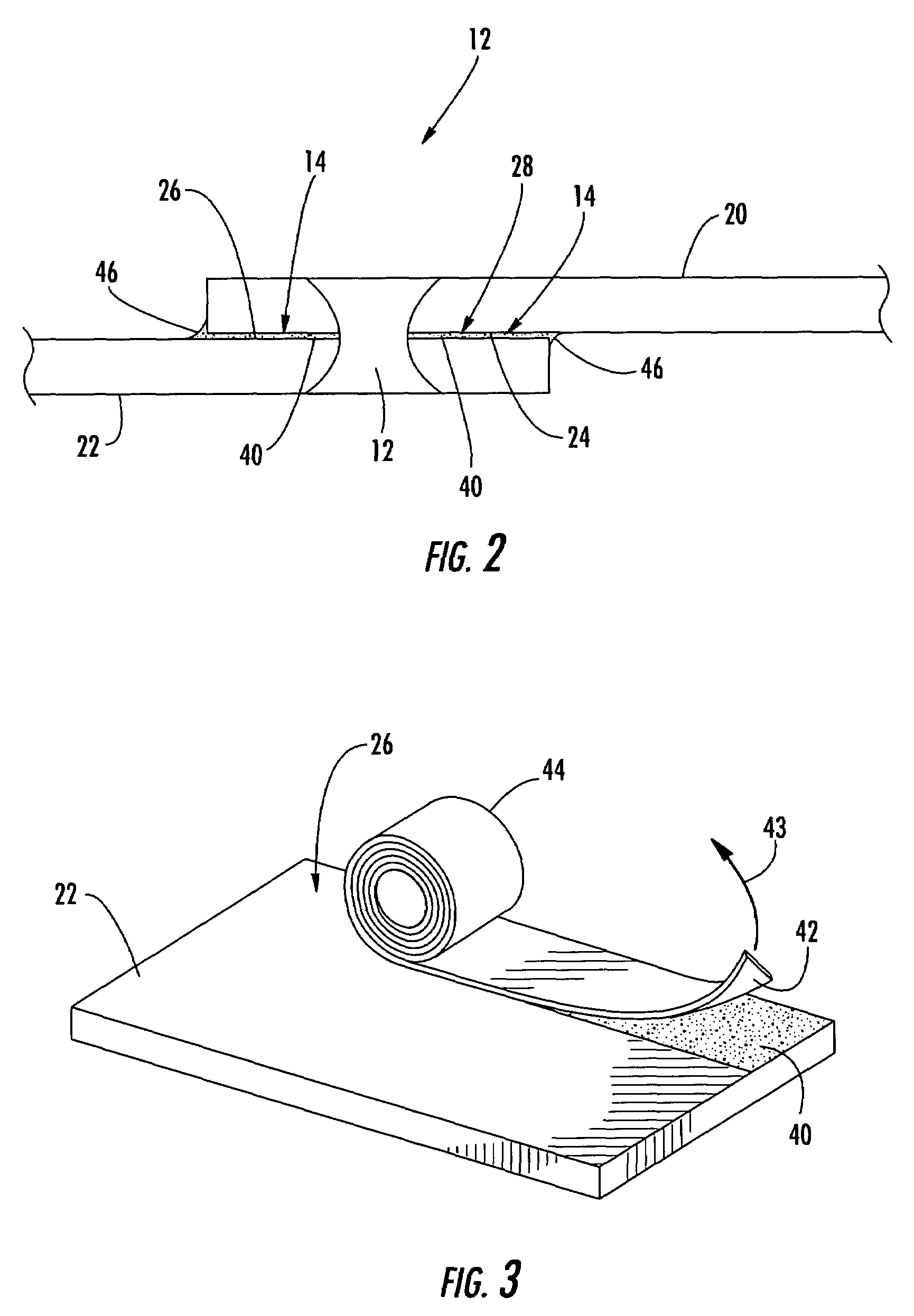Method and sealant for joints
a technology of sealing agent and joint, applied in the field of joint sealing, can solve the problems of unfilled voids, increased corrosion of structural members and fasteners, and easy intrusion into the interface, and achieve the effect of reducing the likelihood of corrosion of the join
- Summary
- Abstract
- Description
- Claims
- Application Information
AI Technical Summary
Benefits of technology
Problems solved by technology
Method used
Image
Examples
Embodiment Construction
[0020]The present invention now will be described more fully hereinafter with reference to the accompanying drawings, in which some, but not all embodiments of the invention are shown. Indeed, this invention may be embodied in many different forms and should not be construed as limited to the embodiments set forth herein; rather, these embodiments are provided so that this disclosure will satisfy applicable legal requirements. Like numbers refer to like elements throughout.
[0021]Referring now to the figures and, in particular, FIG. 1, there is shown an apparatus for forming a joint 10 to connect first and second structural members 20, 22. Two structural members are typically joined by the method of the present invention, but a single structural member can be joined, for example, a tubular member or otherwise curved member with adjoining edges. Alternatively, three or more structural members can be joined, and the structural members can be arranged in various configurations. As illus...
PUM
| Property | Measurement | Unit |
|---|---|---|
| Temperature | aaaaa | aaaaa |
| Thickness | aaaaa | aaaaa |
| Thickness | aaaaa | aaaaa |
Abstract
Description
Claims
Application Information
 Login to View More
Login to View More - R&D
- Intellectual Property
- Life Sciences
- Materials
- Tech Scout
- Unparalleled Data Quality
- Higher Quality Content
- 60% Fewer Hallucinations
Browse by: Latest US Patents, China's latest patents, Technical Efficacy Thesaurus, Application Domain, Technology Topic, Popular Technical Reports.
© 2025 PatSnap. All rights reserved.Legal|Privacy policy|Modern Slavery Act Transparency Statement|Sitemap|About US| Contact US: help@patsnap.com



